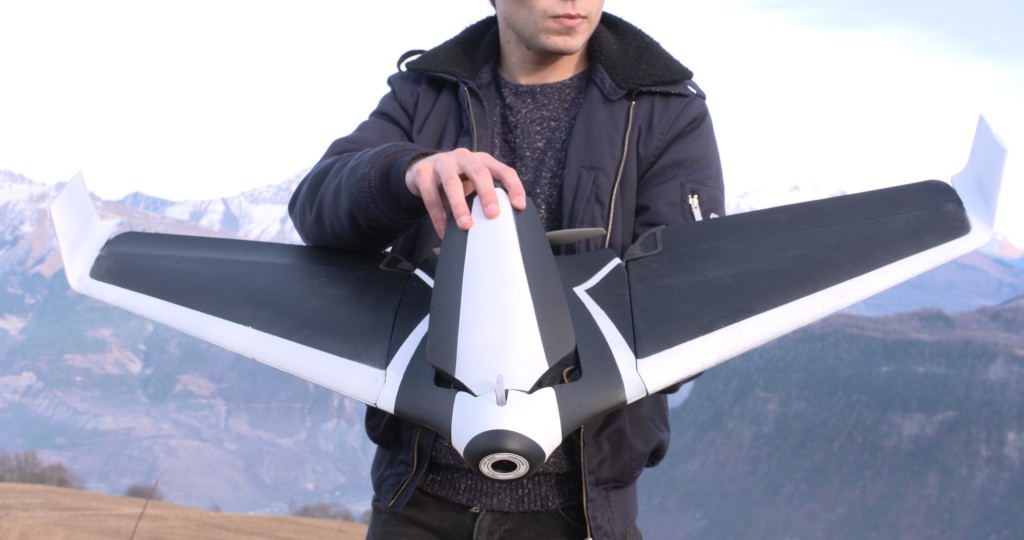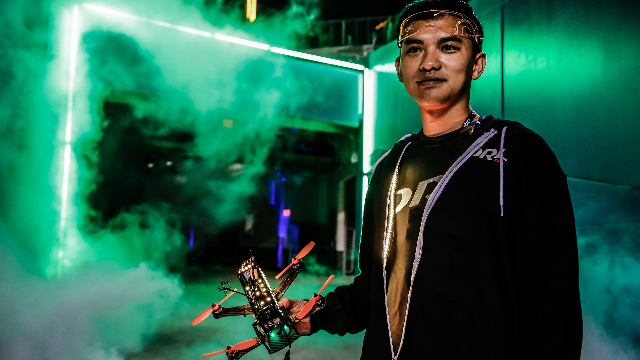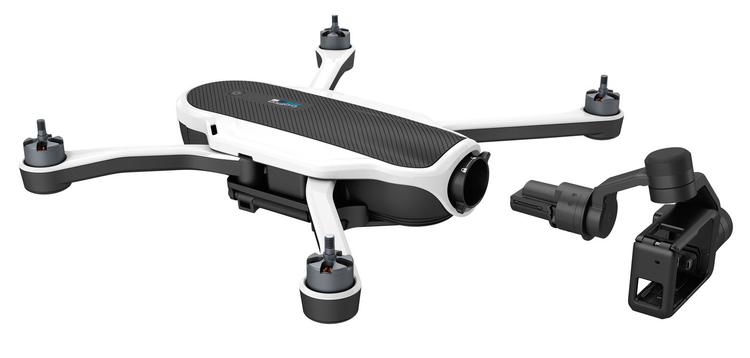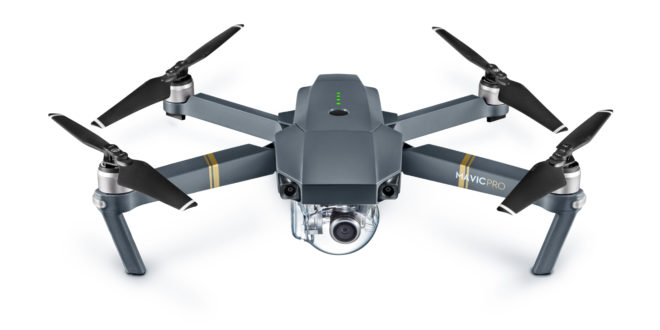Looking back at the progress the consumer drone industry made in 2016, it’s easy to imagine that 2017 will be packed with revelatory product announcements and further strides forward. However, another bumper 18 months of consumer drone innovation seems unlikely at this point. Here’s why…
Let’s begin by concentrating on consumer industry leader DJI. Last year alone, DJI launched three new drones targeted at the consumer market – 5 if you count the Inspire 2 and the upgraded Phantom 3 4K. That’s great, and it’s clear that each one has its own strengths and obvious market. But can this kind of release rate continue? Or was 2016 an exploratory journey for DJI, testing the waters of price, utility and, importantly, consumer patience.
DJI Phantom 4 Pro – Launched at the end of 2016, a matter of months after the original Phantom 4.
The patience part is key. In releasing so many drones for the consumer market in the space of a year, has DJI now set a precedent for the rate of future product launches? Can we expect a Phantom 5, Mavic 2 and a Phantom 5 Pro in the next 12 months? While this would be great for the world of drone journalism – we’d have plenty to write about – is it realistic to expect DJI to succeed with an Apple-like model, turning over new iterations of essentially the same product every year?

Is aerial photography destined to be a niche consumer market? Winner in the Nature category in the Dronestagram/National Geographic awards (Credit: Michael B Rasmussen)
There are a lot of questions if we dig deeper here. First and most crucial: Is the technology there to make substantial advancements to current consumer models without prices going through the roof? And second to that: Will enough customers be willing to buy new iterations a year after their last $1,000 purchase to make it sustainable for manufacturers?
Clearly manufacturers in the consumer drone industry, from DJI to Parrot and Yuneec, will be hoping to target new customers – pilots that aren’t pilots yet. But who really knows how big that group is?
Will consumer drone industry be held back by familiar challenges?
Looking closer at the same old challenges faced by consumer drones, you’d be forgiven for expecting things to plateau in 2017.
There are two types of internal challenges (things that manufacturers have some sense of control over) facing the industry at the moment: technical and financial. On the technical side of things, 2016 was certainly a huge step up from what we’ve seen before. Consumer drones got a lot smarter: Tracking technology, one-touch flight planning, autonomous flight and some level of obstacle avoidance all became the norm for models at the top end of the market. All are helping pilots create incredible footage with ease and precision.

Parrot Disco – Does top of the range battery life require a design rethink?
However, where do things go from here? Sure, these new technologies can be refined and improved, but the major steps have been taken quickly. There remain bigger problems to solve if DJI and its competitors really want to hit the mainstream and grow their customer base to the point where yearly iterations are sustainable.
First is cost. As long as a top of the range photography drone costs upwards of $800, it’s unlikely that pilots – even really enthusiastic ones – are going to dig deep into their pockets for a new model on an annual basis. This kind of price point also becomes restrictive in terms of encouraging new customers to take the plunge.
Another barrier to a truly mainstream consumer drone market is battery life. Although this is something that appears to be slowly improving, there’s no doubt that, at best, thirty minute flight times undermine the user experience and make flying for fun a hobby that requires patience and/or expensive spare batteries. This is the case whatever kind of drone you’re flying.
From an outsider’s point of view, these factors will raise doubts over whether a big investment in drone photography is really worth it. Sure, the footage is going to be great and you’ll be able to make awesome videos. But the question for manufacturers ready to release new models every year is this: Is drone technology yet at the point where it appeals to the masses in terms of price, utility and convenience for newcomers? And are the developments in the coming months going to be substantial enough to justify expensive upgrades for current pilots?

Do racing drones have a better chance of long-term success with consumers than those specialized for photography?
It’s clear that these fundamental questions are getting to the rest of the market. Aside from DJI, major manufacturers including 3DRobotics, Parrot and GoPro have had to lay staff off in recent months. Times are tough.
External pressures on the consumer drone industry
There are a couple of things preventing consumer drones from reaching the next level that aren’t in the hands of manufacturers. These are public opinion and legislation. Although there’s no denying the two are linked. Public opinion of drones and drone technology takes a hit every time a pilot flies somewhere they shouldn’t, every time there’s a privacy concern or a drone is involved in another near-miss situation.
It’s difficult to say whether negative news stories actively stop newcomers from taking up flying and aerial photography as a hobby. But there’s no doubt that all those column inches could better serve the industry if they mentioned positive uses of drone technology instead.
The concentration on dangers and negative stories must have some impact upon legislative bodies, whose banning (in the USA, at least) of beyond line of sight flight has raised doubts over FPV. Enforced registration is another factor many may feel takes some of the fun out of flying. And amateur aerial photography has effectively been banned in Sweden over privacy concerns.
A different route into the mainstream?
Until this point we’ve focused on the photography drones that dominate the consumer market. But there are two other growing sectors that started to gain traction in 2016.
The first is FPV racing, which has now made it onto mainstream TV stations including ESPN and Sky. This is largely due to the sense that we’re dealing with a real sport of the future, which manages to mix together elements of extreme sports, virtual reality and gaming – in a way that might just appeal to a mass market audience. It also helps that racing is cheaper, more social and more accessible than becoming an aerial photography connoisseur.
Organizations such as DRL and huge events with massive cash prizes in Dubai are certainly doing their bit to help things take off, too. The surging popularity of drone racing as a spectacle should cause a spike in new pilots, offering big opportunities to manufacturers in this space in 2017 and beyond. So how long will it be until DJI, Yuneec and even GoPro launch racing drones? Could that be where the real mainstream consumer drone industry is heading?
Having mentioned GoPro, it’s worth mentioning that it’s the only name in the industry with a truly global brand. Even if it doesn’t actually have a working drone on the market at the moment. Another path towards consumer drones becoming mainstream could be companies such as GoPro (Apple would be an interesting proposition) getting involved and profiting from their name as an established name in technology.

GoPro Karma customers were asked to return their drones, but do global brands have more chance of taking consumer drones into the mainstream?
Aside from racing drones and piggybacking on monsters from Silicon Valley, the final approach to taking the consumer drone market to the masses is smaller in stature. Smaller drones were the talk of CES 2017, and there were plenty of high profile ‘selfie’ drones released last year. Models such as Dobby and the Hover Camera Passport target the opposite end of the spectrum to DJI. While they may seem like drones for kids, these startups could expose drone technology to a much wider audience.
These compact and specialized drones feel more like accessories than photography equipment, and maybe that’s the key to a thriving consumer drone industry going forward. There’s certainly a market for cheap drones for those who are simply curious about the technology. DJI has developed a close retail relationship with Apple in recent years. But if the Chinese manufacturer, or any other, wants to emulate Apple’s business model, things will need to change.

The Dobby drone folds up to fit into your pocket. Are smaller drones the way forward?
Apple gets away with releasing new product iterations every year. As a brand it’s crossed the line from utility to fashion. But that kind of needless waste, expense and, dare we say it, built-in obsolescence, won’t wash with drone pilots. So the solution seems to be long term developments that we can’t expect to happen in the next 12 months: reducing cost, vastly improving battery life and accessibility, and finding a way to send out positive messages about of the industry as a whole.
The conclusion for the consumer drone industry is clear: Until these problems are solved, consumer drones will continue to be an expensive but fulfilling hobby for a relatively small number of enthusiasts.
 Unmanned Aerial Vehicle The latest drone news
Unmanned Aerial Vehicle The latest drone news




